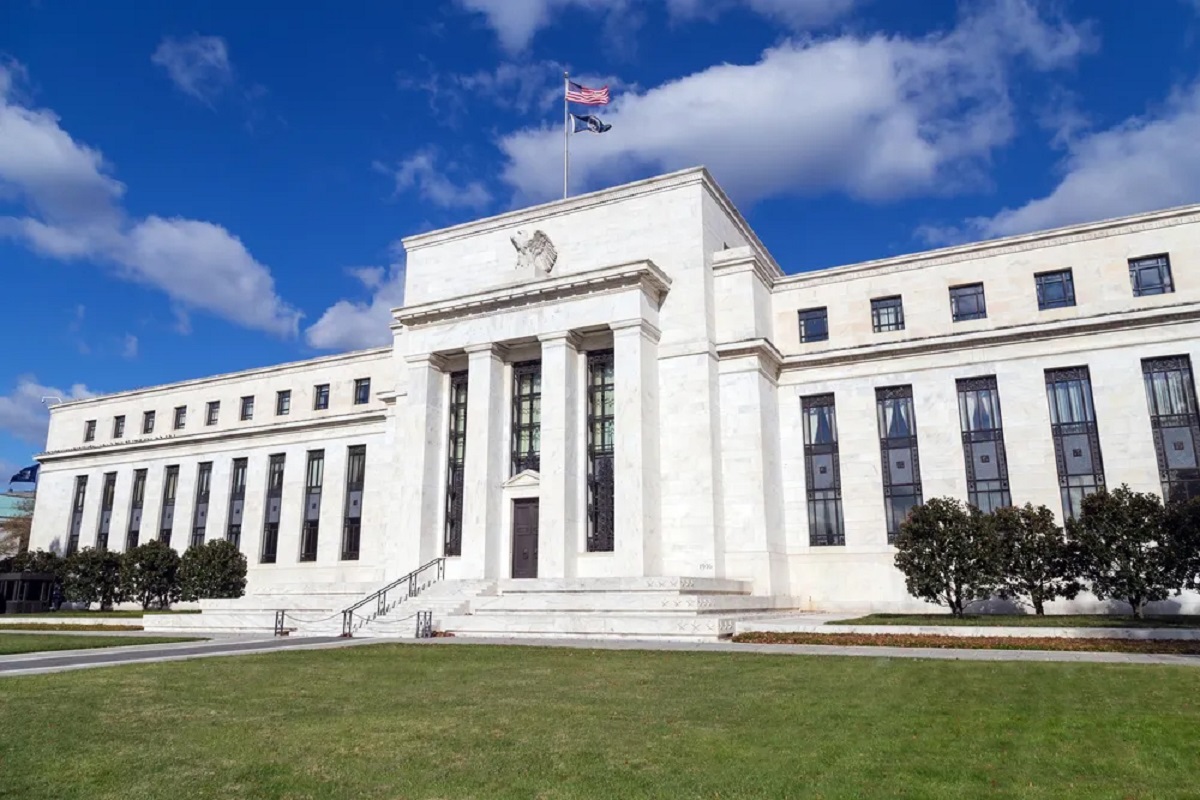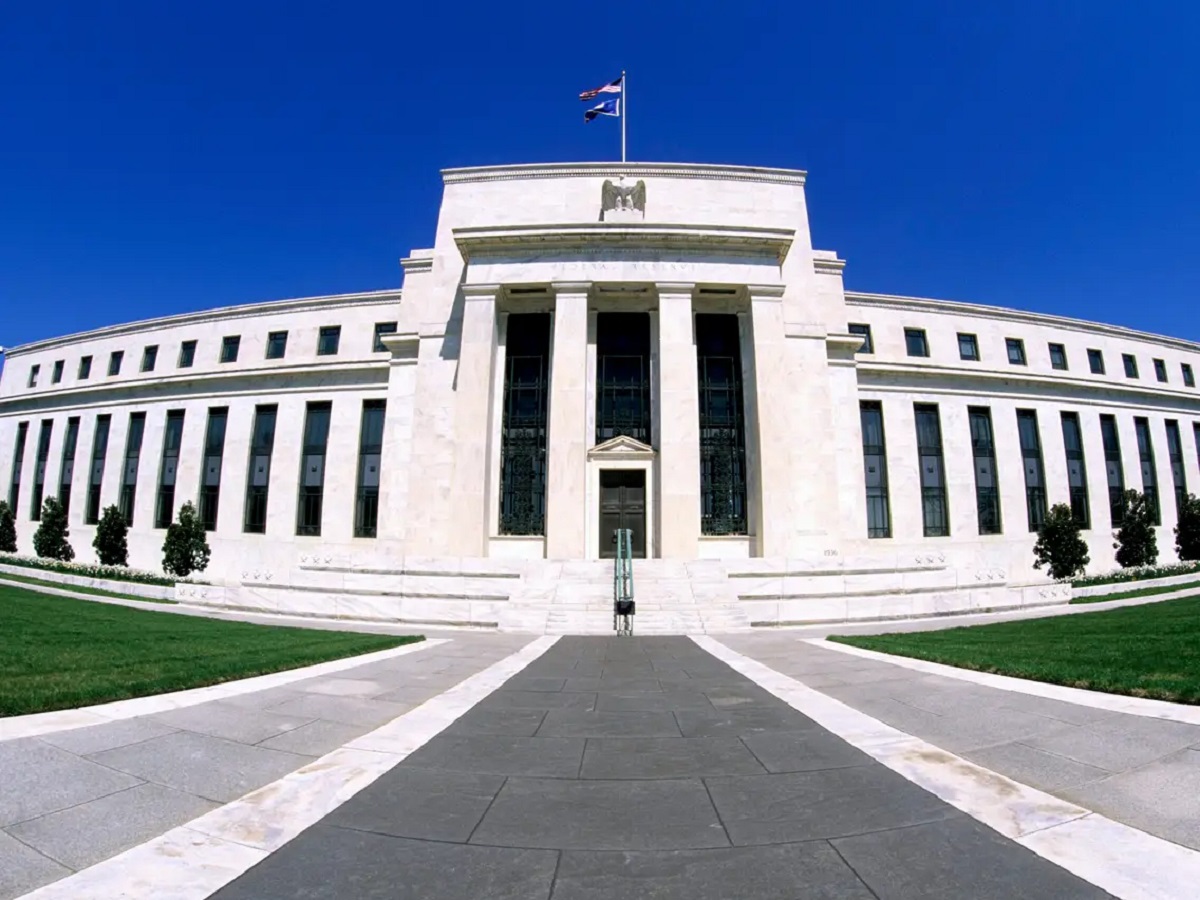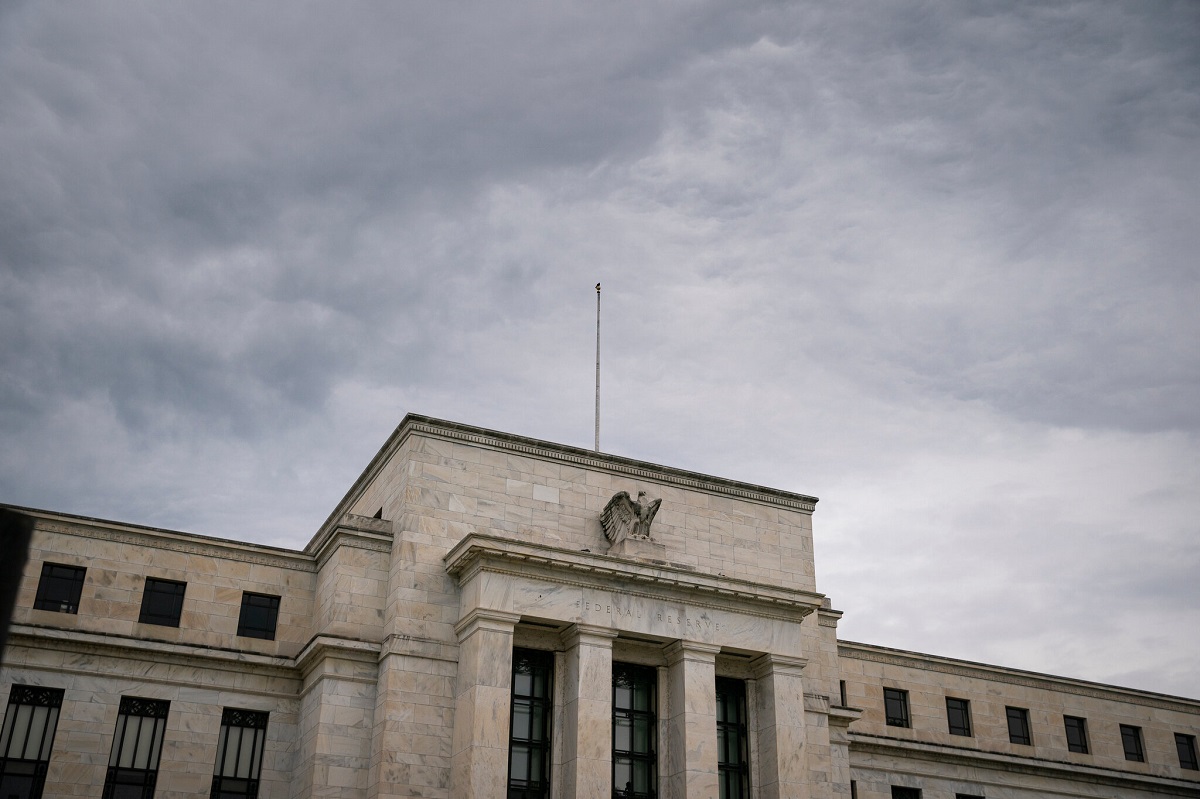Overview
In the world of finance, banks often need to borrow money from one another to meet their short-term funding requirements. This is done through the interbank market, where banks lend and borrow funds from each other. One crucial aspect of these transactions is the interest rate charged by banks for overnight and short-term lending.
The interest rate in the interbank market serves as a benchmark for other lending rates in the economy, impacting various financial products and influencing monetary policy decisions. Understanding how banks determine these interest rates and the factors that affect them is crucial for investors, policymakers, and individuals seeking financial stability.
In this article, we will delve into the intricacies of the interbank market, examine how interest rates are set for overnight and short-term lending, and explore the factors that influence these rates.
Additionally, we will discuss the importance of interbank interest rates in the broader financial system and their impact on the economy as a whole.
Let’s dive deeper into this complex yet vital aspect of modern banking.
Introduction
When banks require short-term funds to fulfill their operational needs or temporary liquidity shortages, they turn to the interbank market. The interbank market acts as a platform where banks lend and borrow money from each other, ensuring the smooth functioning of the financial system.
As part of these transactions, banks charge each other interest rates for lending money overnight or for short periods. These rates, known as interbank interest rates, play a critical role in determining the cost of borrowing and lending for banks.
The interbank interest rates not only influence the interest rates on various financial products offered by banks, such as loans and mortgages, but also serve as a key indicator for central banks in formulating their monetary policy decisions. Furthermore, they reflect the overall liquidity conditions in the banking system and can impact the stability of the financial markets.
In this article, we will explore the intricacies of the interbank market and delve into the factors that influence the interest rates charged for overnight and short-term lending. By understanding the mechanisms behind these rates, we can gain insights into the broader financial system and its functioning.
We will also discuss the significance of interbank interest rates in the economy, as they affect not only banks but also consumers, businesses, and policymakers. A comprehensive understanding of interbank interest rates will allow us to appreciate their role in shaping monetary policy, economic growth, and financial stability.
So, let’s embark on this journey to unravel the workings of interbank interest rates and their impact on the financial world.
The Interbank Market
The interbank market is a crucial component of the global financial system, facilitating the borrowing and lending of funds between banks. It serves as a platform where banks can meet their short-term funding needs by borrowing money from other banks.
This market operates on an over-the-counter (OTC) basis, meaning that transactions are conducted directly between banks without the involvement of a centralized exchange. Banks engage in interbank lending for various reasons, including managing liquidity, offsetting temporary imbalances in their balance sheets, and meeting regulatory requirements.
Interbank lending typically takes place for very short durations, ranging from overnight to a few weeks. Banks seeking funds can request loans from other banks, specifying the desired amount and the duration of the loan. These borrowing requests are commonly made through electronic trading platforms or through direct communication between banks.
On the other side of the transaction, banks with excess funds can offer loans to other banks and earn interest on the amount lent. These lenders evaluate the creditworthiness of the borrowing banks before agreeing to provide funds.
The interbank market operates based on trust and confidence among banks. The strength of a bank’s balance sheet, its credit rating, and the prevailing market conditions play crucial roles in determining whether it can obtain funds from other banks at favorable rates.
Traditionally, the interbank market was primarily reserved for banks; however, in recent years, non-bank financial institutions, such as money market funds and institutional investors, have also gained access to this market. This has increased the liquidity and participation in the interbank market, making it more inclusive.
Overall, the interbank market plays a vital role in the functioning of the financial system, ensuring that banks have access to short-term funds when needed and promoting overall stability in the banking sector.
Understanding Interest Rates in the Interbank Market
Interest rates in the interbank market are determined based on the supply and demand dynamics of funds. The rates are influenced by various factors, including market conditions, the creditworthiness of the borrowing and lending banks, and the overall liquidity in the banking system.
Typically, the interest rates charged in the interbank market are based on a benchmark rate, which is usually a reference rate set by central banks or interbank rate-setting organizations. These benchmark rates serve as a starting point for determining the interest rates on interbank transactions.
For overnight lending, the most common type of interbank borrowing, the interest rate charged is known as the Overnight Indexed Swap (OIS) rate. The OIS reflects the average interest rate at which banks are willing to lend or borrow funds overnight, based on various factors such as market liquidity and credit risk.
Short-term interest rates in the interbank market are influenced by factors such as changes in the central bank’s monetary policy, the demand for funds from banks, and the prevailing economic conditions. If the central bank adopts a contractionary monetary policy and raises interest rates, the interbank interest rates are likely to increase as well, making borrowing more expensive.
The creditworthiness of banks also plays a crucial role in determining the interest rates in the interbank market. Banks with stronger balance sheets and higher credit ratings are generally viewed as less risky by lenders, and as a result, they can borrow funds at lower interest rates. Conversely, banks with weaker financial positions may face higher interest rates due to perceived higher default risk.
Additionally, the overall liquidity in the banking system can impact interbank interest rates. If banks face liquidity shortages, they may be willing to pay higher interest rates to borrow funds in the interbank market. Conversely, if there is excess liquidity in the system, banks may offer loans at lower interest rates to earn a return on their surplus funds.
Understanding the dynamics of interest rates in the interbank market is essential for banks, policymakers, and investors. It helps them gauge the prevailing market conditions, assess the cost of borrowing, and make informed decisions.
In the next sections, we will explore specific types of interbank interest rates, such as overnight interest rates and short-term interest rates, and the factors that influence them in more detail.
Overnight Interest Rates
One of the key interest rates in the interbank market is the overnight interest rate. As the name suggests, this rate applies to short-term borrowing and lending that occurs for a duration of one day.
The overnight interest rate serves as a vital indicator of the overall liquidity conditions in the banking system and reflects the demand and supply dynamics of funds among banks. This rate influences various financial products and transactions, including the pricing of loans, mortgages, and other interest-sensitive instruments.
The most commonly used benchmark for overnight interest rates is the Overnight Indexed Swap (OIS) rate. The OIS rate is an average interest rate at which banks are willing to lend or borrow funds overnight, based on factors such as market liquidity, credit risk, and expectations of central bank policies.
The OIS rate is typically calculated based on actual overnight borrowing and lending transactions between banks, providing an accurate reflection of prevailing market conditions. Central banks and market participants closely monitor the OIS rate as an indicator of short-term funding costs and market liquidity.
Changes in the overnight interest rate can have significant implications for financial markets and the broader economy. If the overnight interest rate increases, it becomes more expensive for banks to borrow funds, which can reduce their liquidity and potentially impact their ability to lend to businesses and individuals. Conversely, a decrease in the overnight interest rate can stimulate lending activity by making borrowing more affordable for banks.
Central banks play a crucial role in influencing overnight interest rates through their monetary policy decisions. By adjusting the benchmark interest rates or implementing open market operations, central banks can affect the supply and cost of funds in the interbank market, thereby influencing overnight interest rates.
Overall, the overnight interest rate in the interbank market is a key indicator of short-term funding conditions and has implications for the broader financial system. Understanding and monitoring this rate is essential for banks, policymakers, and investors to gauge market liquidity, assess funding costs, and make informed decisions.
Short-Term Interest Rates
In addition to overnight interest rates, the interbank market also involves short-term interest rates that apply to borrowing and lending transactions spanning a few days to a few weeks.
Short-term interest rates play a significant role in shaping the cost of funds for banks and the broader financial system. These rates can impact the pricing of various financial products, such as commercial loans, interbank deposits, and money market instruments.
The determination of short-term interest rates in the interbank market depends on several factors. Firstly, the supply and demand dynamics of funds among banks play a crucial role. If there is high demand for funds and limited supply, short-term interest rates may increase as banks compete to borrow funds.
Another factor influencing short-term interest rates is the overall liquidity conditions in the banking system. If there is excess liquidity, banks may offer loans at lower interest rates to earn a return on their surplus funds. Conversely, if liquidity is tight, banks may be willing to pay higher interest rates to secure the necessary funds.
The creditworthiness of borrowing and lending banks also affects short-term interest rates. Banks with stronger financial positions and higher credit ratings are generally seen as less risky by lenders. As a result, these banks can borrow at lower interest rates compared to banks with weaker financial positions.
In addition to market conditions and creditworthiness, central bank policies can influence short-term interest rates. For instance, when a central bank implements an expansionary monetary policy by lowering benchmark interest rates or injecting liquidity into the financial system through open market operations, it can potentially lead to a decrease in short-term interest rates.
Conversely, a contractionary monetary policy that involves raising interest rates or reducing liquidity can result in an increase in short-term interest rates. Central banks closely monitor and adjust these rates to manage inflation, stimulate economic growth, and maintain financial stability.
Overall, short-term interest rates in the interbank market provide insights into the cost of borrowing and lending for banks and impact the pricing of various financial instruments. They are influenced by market dynamics, liquidity conditions, creditworthiness, and central bank policies. Monitoring and understanding these rates is crucial for banks, policymakers, and investors to make informed decisions, assess funding costs, and respond to changes in the financial environment.
Factors Affecting Interbank Interest Rates
Interbank interest rates are influenced by a variety of factors that impact the supply and demand of funds in the interbank market. Understanding these factors is crucial for comprehending the dynamics of interbank interest rates and their implications for the financial system. Let’s explore some of the key factors:
1. Economic Conditions: The overall health of the economy plays a significant role in determining interbank interest rates. Factors such as GDP growth, inflation, and unemployment rates can influence the perceived risk and liquidity requirements of banks, thereby affecting borrowing costs.
2. Central Bank Policies: Central banks have considerable influence over interbank interest rates through their monetary policy decisions. By adjusting benchmark interest rates or implementing open market operations, central banks can affect the supply and cost of funds in the interbank market.
3. Liquidity in the Banking System: The level of liquidity in the banking system can have a profound impact on interbank interest rates. If there is excess liquidity, banks may offer loans at lower rates to deploy their surplus funds. Conversely, if liquidity is tight, banks may need to borrow at higher rates to meet their funding needs.
4. Creditworthiness of Banks: The creditworthiness of borrowing and lending banks is a crucial factor in determining interbank interest rates. Banks with stronger financial positions and higher credit ratings are perceived as less risky by lenders and can borrow at lower rates. Conversely, banks with weaker financial profiles may face higher borrowing costs due to increased perceived risk.
5. Market Sentiment and Confidence: Interbank interest rates can be influenced by market sentiment and confidence. If market participants perceive increased risk and uncertain conditions, lending banks may charge higher interest rates to compensate for the perceived additional risk.
6. Regulatory Requirements: Regulatory policies and requirements imposed on banks can impact interbank interest rates. Regulations such as liquidity coverage ratios and capital adequacy requirements can shape the availability and cost of funds in the interbank market.
7. Interbank Demand and Supply: The balance between the demand for and supply of funds in the interbank market significantly affects interest rates. If there is high demand for funds and limited supply, interest rates may increase as banks compete to borrow funds.
These factors interact and evolve dynamically, shaping the level of interbank interest rates. Market participants closely monitor these factors to assess the prevailing borrowing costs, overall market conditions, and potential risks.
Understanding these factors and their interplay is crucial for banks, policymakers, and investors to make informed decisions, assess funding costs, and respond to changes in the financial landscape.
Importance of Interbank Interest Rates
The interbank interest rates play a vital role in the functioning of the financial system and have significant implications for various stakeholders. Let’s explore the importance of interbank interest rates:
1. Monetary Policy: Central banks closely monitor interbank interest rates as a key indicator of market liquidity and funding conditions. These rates influence the cost of borrowing and lending for banks, which in turn affects the overall money supply, inflation, and economic stability. Central banks use interbank interest rates to implement and adjust their monetary policy decisions.
2. Banking Sector Stability: Interbank interest rates reflect the liquidity and credit conditions in the banking sector. They provide insights into the financial health of banks and their ability to access short-term funds. Monitoring these rates helps regulators and policymakers gauge the stability of the banking system and assess risks associated with banking activities.
3. Pricing of Financial Products: Interbank interest rates impact the pricing of various financial products, including loans, mortgages, and bonds. The rates serve as benchmarks for determining the interest rates that banks charge their customers. Changes in interbank interest rates can directly affect the borrowing costs for individuals, businesses, and governments.
4. Financial Market Conditions: Interbank interest rates reflect the prevailing market sentiment and investors’ risk appetite. Market participants closely monitor these rates to assess overall market conditions, liquidity levels, and potential risks. Changes in interbank rates can influence investment decisions, trading strategies, and the valuation of financial assets.
5. International Financial System: Interbank interest rates have global implications as they impact international financial flows and cross-border lending. These rates influence currency exchange rates, capital flows, and the stability of global financial markets. Changes in interbank rates can trigger ripple effects across different countries and impact the interconnectedness of the global financial system.
6. Economic Growth and Stability: Interbank interest rates play a crucial role in supporting economic growth and maintaining financial stability. They affect the cost of credit for businesses, which can influence investment decisions and overall economic activity. Stable and appropriate interbank interest rates contribute to a healthy financial environment and sustainable economic growth.
Given the importance of interbank interest rates, monitoring and understanding these rates is vital for stakeholders in the financial system, including banks, policymakers, investors, and individuals. By assessing these rates, stakeholders can make informed decisions, manage risks efficiently, and respond to changing market conditions.
Conclusion
The interbank interest rates play a significant role in the functioning of the financial system, influencing the cost of borrowing and lending for banks and impacting various financial products and transactions. Understanding how these rates are determined and the factors that affect them is crucial for stakeholders in the financial industry.
Throughout this article, we have explored the intricacies of the interbank market, the importance of overnight and short-term interest rates, and the factors that influence these rates. We have seen that economic conditions, central bank policies, liquidity dynamics, creditworthiness of banks, market sentiment, and regulatory requirements all shape interbank interest rates.
Moreover, we have emphasized the significance of interbank interest rates in monetary policy decisions, the stability of the banking sector, pricing of financial products, financial market conditions, the international financial system, and overall economic growth and stability. Monitoring and understanding these rates allow stakeholders to make informed decisions, manage risks effectively, and respond to changing market dynamics.
As the financial landscape continues to evolve, it remains important for banks, policymakers, and investors to stay updated on interbank interest rates and their implications. By doing so, they can navigate the complex financial environment, adapt to changing market conditions, and contribute to a resilient and sustainable financial system.
In conclusion, interbank interest rates are not simply numbers on a screen; they are key indicators of financial health, liquidity, and economic conditions. By comprehending their significance and staying informed about their movements, stakeholders can navigate the ever-changing financial landscape with confidence, fostering stability and supporting robust economic growth.

























